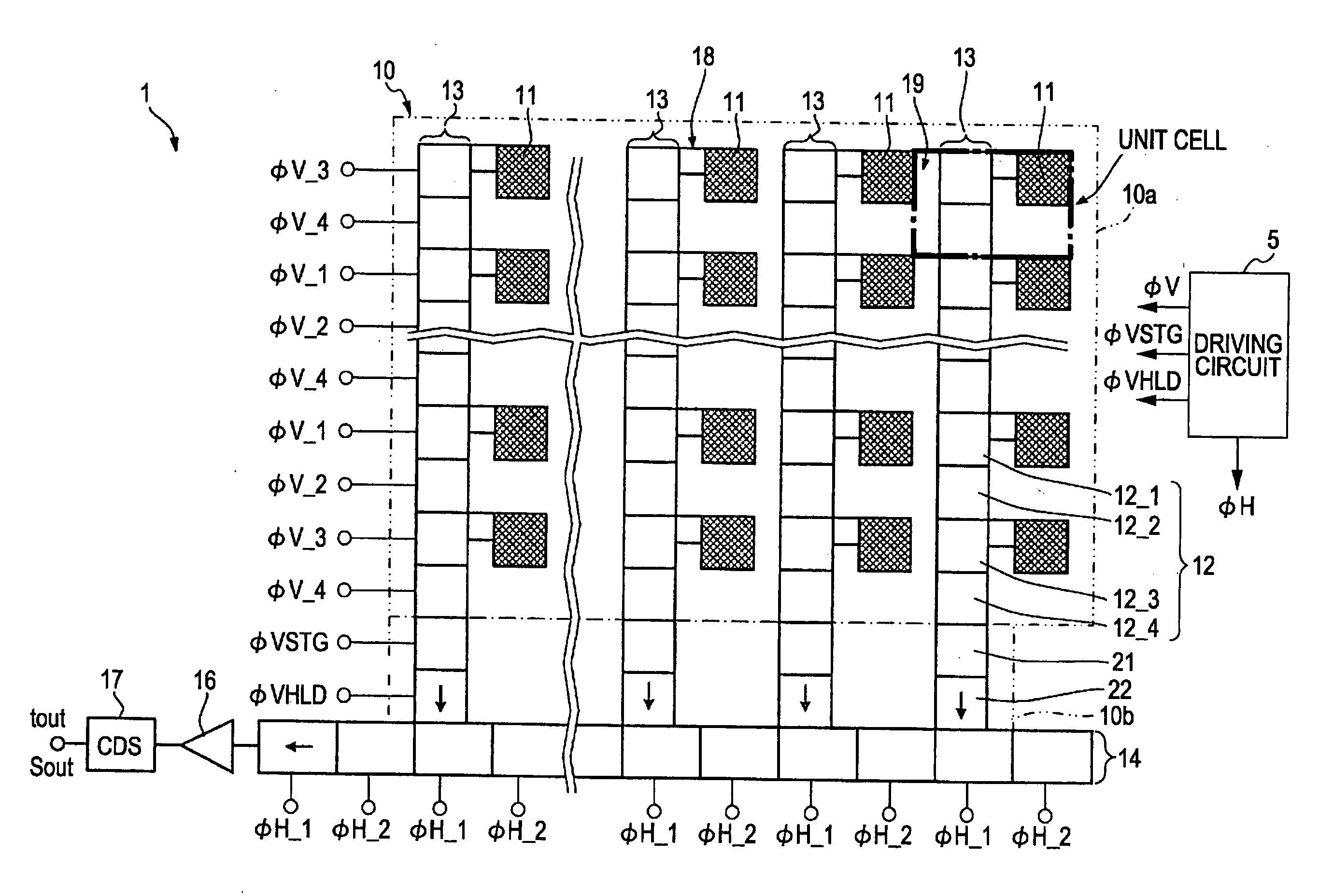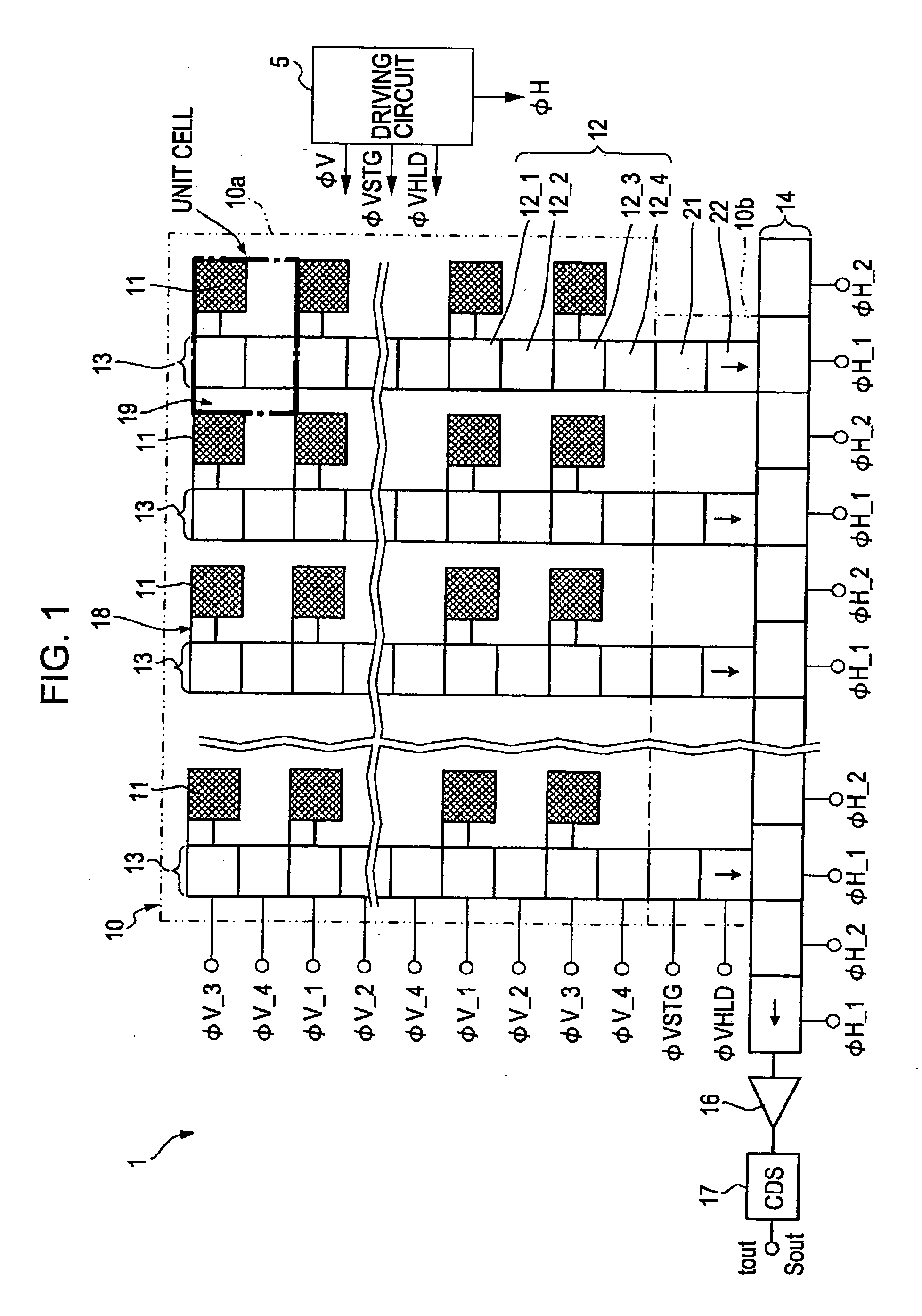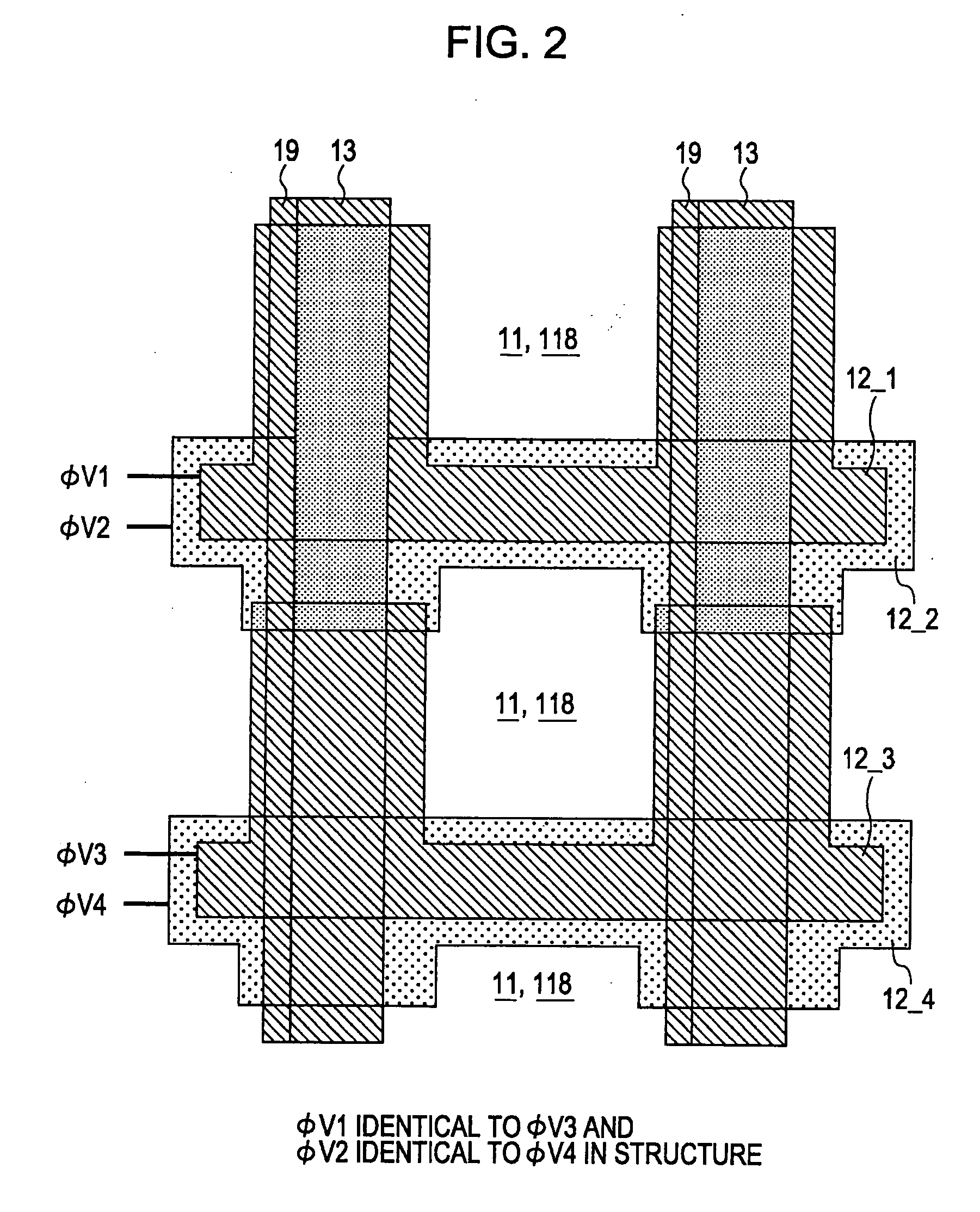Method for driving semiconductor device having capacitive load, method and apparatus for driving load, and electronic apparatus
a semiconductor device and capacitive load technology, applied in the direction of radio frequency controlled devices, television system scanning details, television systems, etc., can solve the problems of inappropriate driving, inappropriate driving, inappropriate driving,
- Summary
- Abstract
- Description
- Claims
- Application Information
AI Technical Summary
Benefits of technology
Problems solved by technology
Method used
Image
Examples
first embodiment (
Noise Control Technique)
[0166]FIGS. 6A and 6B and FIGS. 7A and 7B illustrate a noise control method of a first embodiment of the present invention. FIGS. 6A and 6B are timing diagrams illustrating driving timing for driving the CCD solid-state image pickup element 10 of FIG. 1 in accordance with the first embodiment of the present invention. FIGS. 7A and 7B are timing diagrams illustrating the driving timing of a comparative example.
[0167] The control method of the first embodiment of the present invention is related to the four types of timing of the vertical transfer pulses ΦV supplied to the vertical transfer electrodes 12 for vertically driving the vertical transfer registers 13.
[0168] In the CCD solid-state image pickup element 10, the signal charge is received by and photoelectrically converted by the photo sensor 11 in response to the amount of light and is then stored in photo sensor 11. The signal charge of the photo sensor 11 is then read into the vertical transfer regis...
second embodiment (
Noise Control Technique)
[0227]FIG. 19 illustrates a noise control method in accordance with a second embodiment of the present invention. The noise control method of the second embodiment relates to an active control method that actively controls noise arising from cross-talk noise (coupling noise) induced on PWELL-#2b and the semiconductor substrate SUB in the CCD solid-state image pickup element.
[0228] The conventional vertical driver 40 is used as a vertical driver, and vertical transfer pulses ΦV different in phase having a sharp transient characteristic as in the known art are used.
[0229] As shown in the sectional view of FIG. 3C, the VSUB terminal 130 on the semiconductor substrate NSUB is supplied with the DC bias Vbias, and the PWELL ground terminal 132 of the PWELL-#2a on the side of the output amplifier 16 is connected to the ground GND. Using these terminals, a noise correction signal is supplied from the outside to cancel the coupling noise.
[0230] As shown in FIG. 19,...
third embodiment (
Noise Control Technique)
[0237]FIGS. 20A-20E illustrate a noise control method of a third embodiment of the present invention. The noise control method of the third embodiment relates to a noise control circuit such as a low-pass filter arranged between a vertical driver and a CCD solid-state image pickup element. The third embodiment is largely different from the known art because it is considered important in the known art that the driving signal from the vertical driver should be transferred to a vertical transfer electrode in a form as close as possible to the original shape thereof.
[0238] If the vertical transfer pulse ΦV supplied from the vertical driver 40 is supplied to the vertical transfer electrode via the noise control circuit, the cross-talk noise due to spike noise can be reduced even if unpredicted spike noise is generated in the output of the vertical driver.
[0239] The known vertical driver 40 is herein used as a vertical driver, and vertical transfer pulses ΦV diff...
PUM
 Login to View More
Login to View More Abstract
Description
Claims
Application Information
 Login to View More
Login to View More - R&D
- Intellectual Property
- Life Sciences
- Materials
- Tech Scout
- Unparalleled Data Quality
- Higher Quality Content
- 60% Fewer Hallucinations
Browse by: Latest US Patents, China's latest patents, Technical Efficacy Thesaurus, Application Domain, Technology Topic, Popular Technical Reports.
© 2025 PatSnap. All rights reserved.Legal|Privacy policy|Modern Slavery Act Transparency Statement|Sitemap|About US| Contact US: help@patsnap.com



